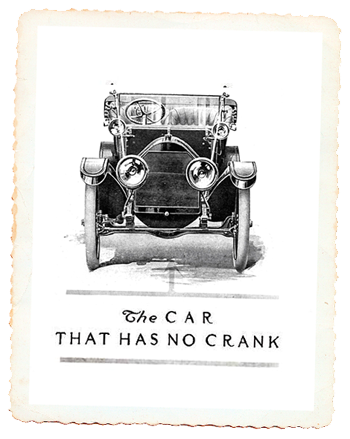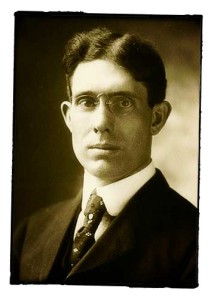It was on this day in 1871 that Bubs was born in Dayton, Ohio. He would be the sixth of seven children for Rev. Milton and his wife Susan.
Throughout his life Bubs had an intense desire to learn and discover, yet he never graduated from high school. It wasn’t because he was stupid or didn’t care, he did care, but having already decided on his life’s work, he didn’t feel it necessary to have a simple piece of paper to succeed. He had decided he wanted to be a printer, but not just a printer, he wanted to be a publisher.
Even before his high school days were over, Bubs had started a printing business with Ed Sines, a classmate and friend who already owned a small printing press and enough type to set a full page folio.
While not specifically detailed, I’m sure Bubs got the printing bug when as a young boy he would visit his father’s office was located above a local print shop that had a large steam powered press.
During his summer vacation, Bubs got a job in a local print shop cleaning up the shop and helping wipe down the presses between runs. What he was actually doing was picking up the techniques of the printing trade– learning the jargon, learning the tools of setting justified type and running proofs. These summer months working there were invaluable to him and helped set him on the right course.
By the time Bubs was sixteen, he was ready to expand his joint venture with Ed. Bubs thought a new press was in order along with more type fonts that would greatly expand the print shop’s capabilities, but Ed wasn’t interested in expanding their business. So instead of expanding their venture. Bubs bought out his friend’s interest and then hired him to help.
To do what he wanted to do, Bubs realized he needed more help. He couldn’t do the sales work, write the stories, set the type and run the press. What he could do was convince his older brother Ullam to join him. Bubs told him that he could be the Editor and Bubs would be the Publisher.
When a seasoned printer visited Bubs’ father, Milton, he took a look at the press Bubs had put together in the backyard shed. The printer agreed with Milton that the press works, but he couldn’t see how it worked.
That printing press was made out of odds and ends Bubs had found including a discarded tombstone that was used as the printing press bed. Once all the type was locked in and inked, the press could produce 1,000 sheets an hour.
With his printing equipment all set, the two boys began selling subscriptions and advertising. They generated enough revenue they could afford a small office. This was the beginning of a partnership that would last all their lives.
Several years later they decided to expand their business to include a manufacturing bicycles. They moved into a new building where they could do the printing on the second floor and manufacture and sell bicycles on the first floor.
In 1899 they decided to change directions entirely and they stopped the presses for good and concentrate on the bicycle shop. They also began investigating the world’s accumulated knowledge on what the two brothers would become best known: being the first men to build and fly a heavier that air machine.
Orville “Bubs” Wright and his older brother Wilbur “Ullam” Wright. To their friends they were just Will and Orv, but to their family they were known as Ullam and Bubs, the two brothers from Dayton that changed the world.

